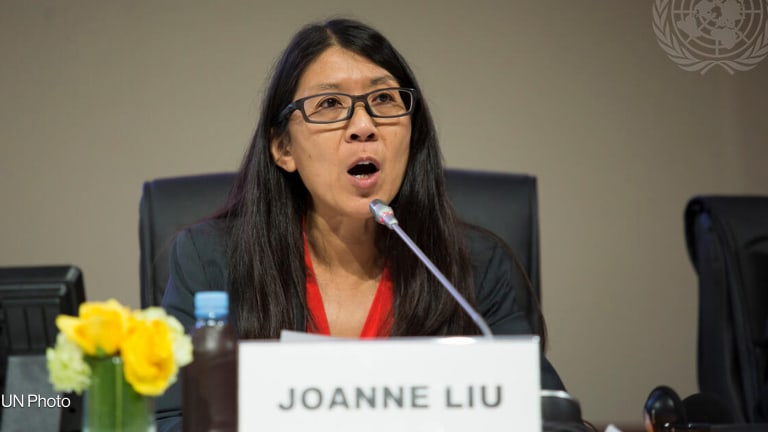
ABIDJAN — Many observers questioned the potential of the nonbinding Global Compact for Safe, Orderly and Regular Migration after its signing by 164 countries in December last year. But advocates who spoke to Devex in the weeks following said they hope the agreement is a starting point for better international cooperation and that it offers feasible targets for countries along migration routes.
“It will take years as we move forward to really realize the compact and make sure it delivers in the way that it is intended to, so we'll see in this first year how far we get.”
— Alice Thomas, climate displacement program manager, Refugees InternationalThe compact was widely criticized for being too broad, with no deadline for action and limited scope for enforcement at country level. With growing anti-immigration sentiment in many countries, some asked whether the compact would simply be ignored in coming years; and worried that the failure of countries such as the United States, Switzerland, and Australia to sign on could undermine it.
But advocates for migrant rights and welfare say they are realistic about what can be achieved. “[The compact] is not too ambitious [because] a lot of these objectives and activities are things that some countries already do, so I think some of these elements are achievable,” Alice Thomas, climate displacement program manager at Refugees International, argued.
The compact outlines 23 objectives that address the numerous challenges associated with unsafe and “irregular” — or undocumented — migration. It builds on the recent Global Compact for Refugees, arriving amid a backdrop of growing nationalism, anti-immigration sentiment, and xenophobia around the world.
“The goal is to get away from the situation that we have now where people are fleeing in desperate situations, being trafficked, dying in transit and being returned en masse to unsafe and life-threatening conditions,” Thomas said.
Countries signed to the compact have the right to determine which particulars they implement and which targets they deem most achievable. The issue of where to start will depend on the situation of each country — whether host, country of transit or origin — experts suggested.
“Implementation will happen at the country level so what will change on the ground and what will be tangible and attainable will depend on the practices [already] in play nationally. However there [are] a lot of concrete elements that, if effectively implemented, could really improve things for migrants,” Delphine Moralis, secretary general of the child advocacy group Terre des Hommes International Federation, told Devex. Targets such as ensuring that all migrants have proof of identity and adequate documentation can prove crucial for children along migration routes, as well as upon arrival, she said.
The compact also urges countries to “account for migrant children in national child protection systems by establishing robust procedures for [their] protection in relevant legislative, administrative and judicial proceedings and decisions” and to establish “specialized procedures for their identification, referral, care and family reunification.” Moralis urged alternatives to detention, which the compact says should “only be used as a measure of last resort,” arguing that alternatives are “eventually cheaper” for governments, as well as better for migrants.
While Moralis and Thomas praised the compact for taking a holistic approach and addressing the root causes of migration, including climate change, they also said more credible data is needed to adapt national responses.
“The problem is that we don’t have a lot of good data on migration, which makes for uninformed policy decisions,” Thomas told Devex. Many targets also require political leadership on human rights, she added; and a key challenge will be capacity building for lower-income countries to better manage their borders and provide migrants with basic services.
For Thomas, the compact serves as a first step. “It will take years as we move forward to really realize the compact and make sure it delivers in the way that it is intended to, so we'll see in this first year how far we get,” she said.
“The compact is a menu and depending on what your issues are, or your challenges to migration in the region where you are, you pick and choose which targets makes sense,” she added. “The biggest challenge is making sure there is enough funding to allow developing countries to build the capacity to do what they have committed to do.”








